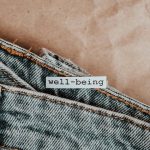Looking for the best fusible web for your applique projects? With a multitude of options available, it can be overwhelming to determine which one will suit your needs best. However, fear not! This guide will provide you with a comprehensive understanding of the various types of fusible web, their heat activation process, and considerations for fabric compatibility.
Whether you're working with delicate or heavy fabrics, we'll help you identify the best fusible web to achieve impeccable results. So, let's delve into the world of fusible web and equip you with the knowledge to elevate your applique game.
Key Takeaways
- Different fusible webs have varying adhesive strengths, so it is important to consider the fabric type and intended use of the applique when choosing the right one.
- Researching and reading reviews can help in making an informed decision when comparing different types and brands of fusible web.
- The activation temperature range should match the fabric and applique needs, as using too low or too high temperatures can result in a weak bond or damage delicate fabrics.
- Fabric weight, drape, heat sensitivity, and shrinkage should be considered when choosing a fusible web to ensure compatibility and achieve a cohesive appearance.
Understanding Fusible Web Basics
The best way to start understanding fusible web basics is to grasp its purpose and how it works in your applique projects.
Fusible web is a thin, adhesive material that melts when heat is applied, allowing you to bond fabrics together without the need for stitching. Understanding application techniques involves knowing how to apply the fusible web to your fabric and how to fuse the layers together effectively.
When comparing adhesive strengths, it's crucial to consider the type of fabric you're working with and the intended use of the applique. Some fusible webs are designed for lightweight fabrics, while others are better suited for heavier materials. Understanding the adhesive strengths will help you choose the right fusible web for your specific project, ensuring a strong and durable bond.
Types of Fusible Web
To understand the best types of fusible web for your applique projects, consider the specific characteristics of each variety and how they align with your fabric and project requirements. When it comes to application techniques, different types of fusible web offer varying methods of application such as sew-in, machine-sew, and iron-on. Each technique has its pros and cons, so it's important to choose one that suits your skill level and the specific needs of your project.
There are various brands of fusible web available in the market, and it's essential to compare and review them to determine which one best meets your needs. Some popular brands include HeatnBond, Wonder Under, and Steam-A-Seam. Each brand offers unique features and adhesion strength, so researching and reading reviews can help you make an informed decision.
When comparing different types of fusible web, consider factors such as weight, stiffness, and ease of use. Some fusible webs are better suited for lightweight fabrics, while others provide a stiffer bond that works well for heavier materials. By understanding the differences between various types and brands of fusible web, you can select the one that will best enhance your applique projects.
Heat Activation Process
When considering the best fusible web for applique, it's essential to understand the heat activation process.
This includes the activation temperature range, bonding time required, and compatible fabric types.
Understanding these points will help you select the most suitable fusible web for your applique projects.
Activation Temperature Range
You should select a fusible web with an activation temperature range that suits your specific fabric and applique needs. The activation temperature range is crucial for achieving optimal performance. Different types of fusible web have varying activation temperature ranges.
Understanding the temperature range is essential as it directly impacts adhesion strength. If the temperature is too low, the web may not adhere properly, resulting in a weak bond. Conversely, if the temperature is too high, it can damage delicate fabrics or cause the adhesive to seep through.
Consider the fabric you're working with and the heat sensitivity of your applique when choosing a fusible web with the right activation temperature range. This attention to detail will ensure a successful and durable applique application.
Bonding Time Required
For optimal results, ensure that the bonding time required for the heat activation process aligns with the specific fabric and applique you are working with. The bonding time, or heat activation process, varies based on the fusible web and the fabric being used. It is crucial to follow the manufacturer's instructions for the recommended bonding time to achieve the desired bonding strength and durability. Some fusible webs offer quick bonding times, which can be time-saving and efficient, while others may require a longer heat activation process for a stronger bond. Here's a comparison table to illustrate the bonding time required for some popular fusible webs:
| Fusible Web | Bonding Time Required |
|---|---|
| Web A | 5-7 seconds |
| Web B | 10-12 seconds |
| Web C | 15-18 seconds |
| Web D | 20-25 seconds |
Compatible Fabric Types
Select fabric types that correspond with the heat activation process recommended for the fusible web you're using to ensure optimal adhesion. Different fabric types react differently to heat and adhesives, affecting the overall outcome of your applique project. Consider the following fabric preparation and care tips to ensure compatibility with the heat activation process:
- Fabric Selection: Choose natural fibers like cotton and wool for heat-activated fusible webs, as they can withstand the heat without damage.
- Pre-Washing: Always pre-wash your fabric to remove any sizing or chemicals that could interfere with the adhesive strength and durability of the fusible web.
- Testing: Before starting your project, conduct a test on a scrap piece of fabric to ensure that the chosen fabric type is compatible with the heat activation process of the fusible web.
Considerations for Fabric Compatibility
When choosing a fusible web for applique, it's important to consider the compatibility with your fabric. Factors such as fabric weight and drape, heat sensitivity and shrinkage, and adhesive residue concerns should all be taken into account.
Understanding how these points relate to your specific fabric will help you make the best choice for your applique project.
Fabric Weight and Drape
Considering fabric weight and drape is crucial for achieving optimal fabric compatibility when using fusible web for applique. The drape of the fabric plays a significant role in how well it will adhere to the fusible web and the underlying base fabric.
Here are some essential considerations for fabric weight and drape:
- Fabric Weight: Lighter weight fabrics, such as chiffon or organza, may require a lighter weight fusible web to maintain their delicate drape and texture.
- Drape: Fabrics with a fluid drape, like silk or rayon, benefit from a fusible web that enhances their natural movement without adding stiffness.
- Compatibility: Matching the weight and drape of the fusible web to the fabric ensures that the applique maintains a cohesive and natural appearance without compromising the fabric's characteristics.
Understanding how fabric weight and drape interact with fusible web can elevate your applique techniques to a professional level.
Heat Sensitivity and Shrinkage
Fabric compatibility with fusible web is crucial when considering heat sensitivity and shrinkage. Different fabrics react differently to heat, and it's important to choose a fusible web that complements the fabric's characteristics. Consider the heat sensitivity of the fabric, as well as its tendency to shrink, when selecting a fusible web for applique projects. To illustrate this, here's a table depicting the heat sensitivity and shrinkage considerations for various common fabrics:
| Fabric | Heat Sensitivity | Shrinkage |
|---|---|---|
| Cotton | Moderate | High |
| Linen | Low | High |
| Wool | Low | Moderate |
| Polyester | High | Low |
| Silk | Moderate | Moderate |
Understanding these fabric characteristics will help you choose the most suitable fusible web for your specific project, ensuring a successful and durable applique.
Adhesive Residue Concerns
Are there specific concerns about adhesive residue and fabric compatibility that you need to address when selecting a fusible web for your applique projects?
When considering adhesive residue, it's important to choose a fusible web that minimizes the risk of leaving behind sticky residue on your fabric.
Here are some key considerations for fabric compatibility and preventing adhesion issues:
- Compatibility with delicate fabrics: Look for a fusible web that's gentle on delicate fabrics to prevent damage or discoloration.
- Residue removal: Prioritize a fusible web that allows for easy removal of any adhesive residue, ensuring your fabric stays clean and undamaged.
- Adhesion issues prevention: Select a fusible web that offers strong adhesion without causing issues such as stiffness or warping in your fabric.
These factors will help you ensure a successful and professional-looking applique project while preserving the integrity of your fabrics.
Best Fusible Web for Delicate Fabrics
When working with delicate fabrics for applique, it's important to choose a fusible web that's specifically designed for fragile materials. Look for fusible webs that are labeled as suitable for delicate materials such as silk, as they're designed to bond effectively without causing damage. For silk fabrics, a lightweight fusible web is ideal to prevent stiffness and retain the natural drape of the fabric.
When appliqueing on lace, it's crucial to select a fusible web that's ultra-light and won't affect the delicate texture of the lace. Opt for a fine, sheer fusible web that provides a secure bond without adding bulk.
When choosing a fusible web for delicate fabrics, prioritize options that are designed to be gentle and non-intrusive. Always test the fusible web on a small, inconspicuous area of the fabric to ensure that it doesn't cause any damage or discoloration.
Best Fusible Web for Heavy Fabrics
Select a heavyweight fusible web for applique on heavy fabrics, ensuring a secure bond without adding unnecessary bulk. When choosing a fusible web for heavy fabrics, consider the following:
- Adhesive Strength: Look for a fusible web with a strong adhesive that can effectively bond to heavy fabrics such as denim, canvas, or upholstery materials. A robust adhesive will ensure that your applique pieces stay firmly in place, even after multiple washes or heavy use.
- Heat Tolerance: Heavy fabrics often require higher heat settings for effective bonding. Opt for a fusible web that can withstand the heat required for heavy fabrics without melting or becoming too tacky, which could compromise the overall quality of your applique work.
- Minimal Bulk: Heavy fabrics already have substantial weight and texture. Choose a fusible web that adds minimal bulk when fused, allowing your applique pieces to seamlessly integrate with the fabric without creating unnecessary stiffness or rigidity.
Fusible Web for Machine Applique
For machine applique, it is important to choose a fusible web that offers strong adhesive strength and heat tolerance. This will ensure secure bonding and durability during stitching. When selecting a fusible web, consider the specific techniques you'll be using and any troubleshooting you may encounter during the process. Look for a web that is compatible with machine stitching and won't gum up your needle.
When comparing fusible web alternatives for machine applique, take into consideration the weight and drape of your fabric. Lighter weight fabrics may require a lighter weight fusible web to prevent stiffness, while heavier fabrics will benefit from a stronger adhesive. Additionally, compare the melting point of different fusible webs to ensure they can withstand the heat from your iron without scorching or damaging the fabric.
Tips for Successful Applique With Fusible Web
To ensure successful applique with fusible web, it's important to carefully trim away excess web from the edges of your applique shapes. This ensures that there's no excess bulk in your applique design and creates a clean, professional finish.
Here are some tips for successful applique with fusible web:
- Design: When creating your applique design, consider using smaller, simpler shapes to avoid bulkiness. Intricate designs can be challenging to execute neatly with fusible web, so start with simpler designs and gradually work your way up to more complex ones.
- Placement: Proper placement of your applique shapes is crucial for a successful outcome. Take your time to position the shapes accurately before fusing them in place. Using a clear ruler and fabric marking pen can help ensure precise placement.
- Troubleshooting: If you encounter any issues such as web residue on your needle or puckering of the fabric after fusing, troubleshoot by adjusting the heat setting of your iron or using a pressing cloth to protect delicate fabrics.
Frequently Asked Questions
Can Fusible Web Be Used for Non-Fabric Materials, Such as Paper or Leather?
Yes, fusible web can be used with non-fabric materials like paper or leather, making it versatile for crafting on unconventional surfaces. It provides a strong bond and is a popular choice for various crafting projects.
Is There a Fusible Web Specifically Designed for Applique on Stretchy or Knit Fabrics?
When working with stretchy or knit fabrics for applique, the best option is a fusible web specifically designed for these materials. It provides the necessary flexibility and adhesion to ensure a smooth and professional finish.
Can Fusible Web Be Used for Creating Three-Dimensional Applique Designs?
Yes, you can use fusible web to create three-dimensional applique designs. There are alternatives like foam or puffy fabric paint for added dimension. Experiment with different options to achieve the desired effect for your project.
Are There Any Special Considerations for Using Fusible Web With Metallic or Sequined Fabrics?
When using fusible web with delicate fabrics, be sure to test on a scrap first. For metallic or sequined fabrics, place a press cloth over them to avoid damage and use a lower heat setting.
How Does Fusible Web Hold up to Repeated Washing and Drying?
When washing and drying, fusible web durability depends on the specific type and brand. Check the product's instructions for compatible materials, like metallic or sequined fabrics, to ensure it holds up over time.
- Nonwoven Vs Woven Bags: an In-Depth Comparison - July 11, 2025
- Which Wax Strips Are Better: Woven or Nonwoven? - July 11, 2025
- What Temperature Is Needed to Thermoform Nonwoven Polyester? - July 11, 2025







